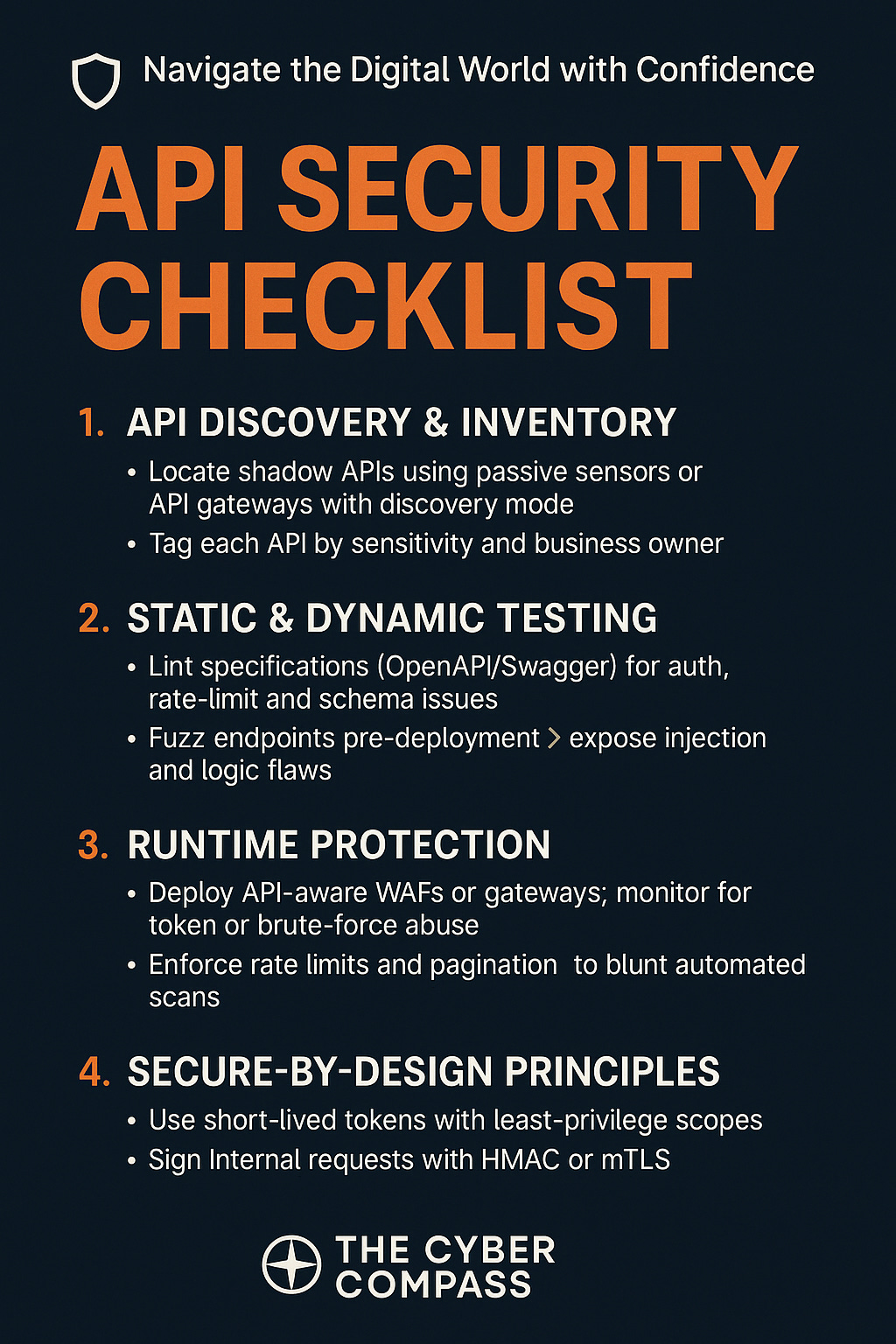🛡️ Emerging Threat: API-First Exploitation in Hybrid Cloud Environments
Small endpoints, big blast radius: why neglected APIs are the easiest way into your cloud.
1. APIs: The Glue (and Achilles’ Heel) of the Modern Stack
Hybrid and multi-cloud strategies run on REST, GraphQL, and event-driven APIs that knit together microservices, serverless functions, and legacy workloads. A single mobile transaction may bounce across 30+ internal APIs before it finishes.
Scale that up and you get an attack surface that outpaces traditional perimeter controls.
📉 Gartner warned back in 2021 that APIs would become the number-one enterprise attack vector—and every major breach tally since has proved them right.
2. Real-World Damage: Recent API Breaches
Optus (Telco, 9 million customers, 2022)
• Root cause: Public-facing API with no authentication check
• Impact: Passport & driver licence numbers exposed; ongoing regulator investigation
Multiple APAC Enterprises (2025)
• Root cause: Auth bypass + poor visibility
• Impact: Average loss ≈ USD $580,000 per incident (Akamai, 2025)
Global SaaS Providers (Salt Security Survey, 2025)
• Root cause: Broken auth, excessive data exposure
• Impact: 99% experienced at least one API security incident in the past 12 months (Salt Labs Report)
3. How Attackers Slip In
JWT Misuse
→ Weak signing key or no expiry allows token replay
Why it works: Lets attackers impersonate users long-term
Injection & Enumeration
→ Crafted GraphQL or body params dump database rows or cycle IDs
Why it works: APIs often lack query length limits and rate controls
Broken Authentication
→ Missing MFA, leaked secrets, predictable tokens
Why it works: Still #2 on the OWASP API Top 10
CORS Misconfigurations
→ Access-Control-Allow-Origin: *
Why it works: Cross-site data access without valid credentials
🧟♂️ Quiet truth: Many of these endpoints are undocumented “zombie” or “shadow” APIs—spun up during fast sprints and forgotten until a scanner (or attacker) finds them.
4. Defence Tactics You Can Start Today
🗂️ 1) API Discovery & Inventory
Deploy passive sensors or enable discovery mode in your API gateway
Tag each endpoint by sensitivity level and business owner
🧪 2) Static & Dynamic Testing
Shift-left: lint OpenAPI/Swagger files for missing auth, rate limits, or broken schema
Fuzz endpoints in CI/CD pipelines to catch logic flaws pre-deployment
🛡️ 3) Runtime Protection
Deploy API-aware WAFs or inline gateways that understand path/verb/context
Use behavioural detection to flag brute force or token abuse
🔐 4) Secure-by-Design Principles
Use least-privilege, short-lived tokens
Sign internal API calls (HMAC, mTLS)
Enforce pagination and rate-limiting to blunt enumeration attacks
📊 Salt Security and Traceable reports agree: hard auth + runtime visibility cuts incident rates in half for mature teams.
5. The Bigger Picture
API security isn’t a niche concern—it’s the foundation of modern cloud hygiene.
Zero Trust: Every API call should be authenticated and authorised
Identity Hygiene: Secrets should be clean, rotated, and minimal
DevSecOps: Security testing should live inside your pipeline, not beside it
Locking down APIs today prevents tomorrow’s supply-chain-style surprises.
6. Call to Action: Your One-Month API Challenge
Want a place to start? Try this 3-step challenge for your next security sprint:
Inventory your top 100 internal and public endpoints
Patch critical gaps (broken auth, open CORS, missing rate limits)
Deploy a runtime sensor or WAF before your next major release
🔁 Share results with your security champions and repeat quarterly.
✅ Key Takeaways
APIs now outnumber web pages in most enterprise environments
Broken auth and misconfigs are still the top risks
API Discovery → Testing → Runtime Guardrails = the winning trio
Start now to protect your hybrid cloud architecture in 2025 and beyond
🧭 Continue Your Journey
📚 Cyber Security 201: How You’re Still Being Tracked Without Cookies
📚 Cyber Security 202: The Dark Side of Convenience
📚 Cyber Security 203: How Data Brokers Profit From Your Identity





